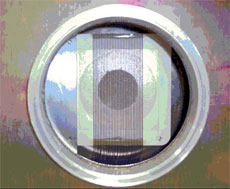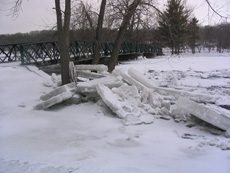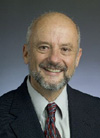|
Tue., March 6
11:00 a.m. Academic Lecture Series -
1 West
Speaker: T. Becher, Fermilab
Title: Course 4, Part 3: QCD Effects in B Decays
1:30 p.m. Research Techniques Seminar -
West Wing
Speaker: D. Zheng, Kotura Inc. WH-10NW
Title: Kotura, Silicon Photonic Technology and Capabilities
3:30 p.m. DIRECTOR'S COFFEE BREAK - 2nd Flr X-Over
4:00 p.m. Accelerator Physics and Technology Seminar -
1 West
Speaker: K. Yonehara, Fermilab
Title: Six Dimensional Phase Space Cooling Simulation
for a Muon Collider
Wed., March 7
1:00-3:30 p.m.
Fermilab Community Symposium on the International Linear Collider -
Auditorium
Speakers: P. Oddone and C. Quigg, Fermilab
B. Barish, California Institute of Technology
THERE WILL BE NO DIRECTOR'S COFFEE BREAK TODAY
THERE WILL BE NO FERMILAB ILC R&D MEETING THIS WEEK
THERE WILL BE NO FERMILAB COLLOQUIUM THIS WEEK
Click here for NALCAL,
a weekly calendar with links to additional information. |
Tuesday, March 6
Golden Broccoli & Cheese
Cheesy Greek Squeeze
Coconut Crusted Tilapia
Spaghetti w/Meatballs
Toasted Almond Chicken Salad on Croissant
Assorted Slice Pizza
Chicken Fajitas
Wilson Hall Cafe Menu |
|
Wednesday, March 7
Lunch
-Chicken Satay with Peanut Dipping Sauce
-Oriental Salad
-Jasmine Rice
-Banana Spring Rolls
Thursday, March 8
Dinner
-Risotto Cakes with Shrimp with Mustard Sauce
-Medallions of Beef with Cabernet Sauce
-New Potatoes with Dill
-Green Beans with Lemon Zest
-Gran Marnier Soufflé
Chez Leon Menu
Call x4598 to make your reservation. |
|
|
ILC symposium at Fermilab

Fermilab will host a symposium tomorrow about the ILC and lab's role in it. The symposium will be held from 1:00 p.m. to 3:30 p.m. in the Ramsey Auditorium, and everyone is welcome. Speakers include Fermilab theorist Chris Quigg, GDE director Barry Barish, and Fermilab director Pier Oddone. There will be ample time for questions and discussion following the talks.
Streaming video will be available.
A reception with refreshments will follow in the Atrium from 3:30-5:00 p.m.
Learn more
|
How low can it go? ILC test beam gets a better range


*Top, from left: Dan Schoo, Greg Sellberg, Gianni Tassotto and Linda Purcell-Taylor test the scintillating fiber profile monitor. Bottom: The name is a mouthful, but this new "multi-anode phototube scintillating-fiber profile monitor" will help cut-down on material inside the beamline. This is especially crucial with low-energy beams, which scatter easily.
Usually bigger, faster and higher energy are all good things in particle physics. But when it comes to test beams for the ILC, low energy beams have become the gold standard: They allow physicists to learn how proposed detectors respond to the low-energy particles that will fly out of ILC collisions. On Friday, Chuck Brown, Rick Coleman and Carol Johnstone of AD-External Beamlines made an important leap into the low-energy region. They were able to bring a 1 GeV beam to the Meson Test Beam Facility.
"The new beam line worked almost out of the box," said PPD's Marcel Demarteau, who leads Fermilab's ILC detector R&D efforts. Before the overhaul, the lowest the MTest beam could reach was 4 GeV. But back in June, ILC detector designers asked for a 1 GeV beam so they would not have to rely on computer simulations to understand how low-energy particles would interact with proposed detectors. "Being able to actually measure particle showers over the full energy range from 1 GeV to 120 GeV will be critical for the design of ILC detectors," said Demarteau. The test beam reaches 120 GeV at its highest energy.
To reduce the test beam's lowest energy, the External Beamlines group overcame a number of obstacles. As the energy of a beam is lowered, particles in the beam have a shorter lifetime, causing the beam to disintegrate. Also at lower energies, the beam is more likely to scatter. "We had to minimize material inside the beam line so that it would not hit the particles and make the beam diffuse," said Coleman. Finally, the power supply had to be adjusted so it could accurately mete out energy ranging from 120 GeV all the way down to 1 GeV. As energies get lower, precision is even more crucial, since the power supply can only deviate by a tiny fraction of the already-low current. "Matt Kufer and Bryon Falconer, of AD's Electrical Engineering Dept., provided
the needed current stability at very low currents," said Coleman. "Many other groups, including the AD Mechanical Dept., the Alignment
Group and PPD support groups, contributed to the successful inauguration
of this upgraded test facility. It will serve the lab and the physics community well into the ILC era."
--Siri Steiner
|
|

Ice-jam on the Fox River: AD's Dave Peterson sent this picture yesterday. He writes: "Attached is a photo taken on March 3, looking southwest from the east side Fox River Trail in the Fabyan Forest Preserve. This is a nice example of some obvious forces of nature."
|
The Timberjay
March 5, 2007:
NSF selection team to visit Soudan lab on Friday
A team of scientific experts from the National Science Foundation will be in Soudan on Friday, March 9, as part of the NSF's selection process for the location of a Deep Underground Science and Education Laboratory, or DUSEL. A total of 15 officials from the NSF's site selection committee will be on hand to hear the pitch from the University of Minnesota, Fermilab, and other collaborators, for bringing the DUSEL to Minnesota.
The event, which will be highly technical, will be closed to the media, the public, and politicians.
Read More |
|
|
Press(ure) points
 |
| Pier Oddone |
One activity that comes with the job of director is to talk to the press and to science writers. The members of the press play a key role in communicating to the scientific community and the public the excitement of discovery in particle physics and the challenges we face in achieving our scientific goals.
As a lab director, I find that talking to the press is invariably exciting. Whenever I talk to a reporter, I always feel both hopeful that I'll convey important points accurately and concerned that those points will somehow be lost or distorted. Opening a newspaper or a science magazine after an interview is always a moment of trepidation. What will it say that I said? No matter how good or how conscientious the reporter, there is always the fear that my thoughts won't come through the way I meant them. And even at best, an hour's interview must often be shortened to a sound bite that misses the full context of the conversation. Anyone who has ever been unfortunately quoted out of context knows just what I mean.
With all the press attention following Undersecretary's Orbach's request to the HEP community at the HEPAP meeting last week, I want you to have a clear statement of Fermilab's priorities in my own words.
1) The ILC R&D remains the highest priority for the future of the laboratory. Fermilab will work with the GDE to provide the technical design that will form the basis for a decision to proceed with the ILC. We will continue to work with the DOE, our national and international partners, the State of Illinois and the surrounding community to develop Fermilab as the host site for the ILC.
2) Fermilab, working with the HEP community, will develop a strategic plan for the accelerator-based part of the U.S. particle physics program. I am appointing a steering group for this plan under the leadership of Deputy Director Kim with broad participation from the community. The plan we develop will support the ILC R&D. It will also provide opportunities for discovery should substantial delays beyond the technically-limited schedule for the ILC occur, or if the LHC points to the need to explore a higher energy scale.
3) Fermilab will support the planning mechanisms of the HEP community that exist through P5 and HEPAP. The strategic plan that Fermilab will develop in partnership with the HEP community will propose to HEPAP, P5 and the DOE a robust program of accelerator-based particle physics during the next two to three decades with the intent to maximize the potential for major discovery during that period.
|
|
Workshop on Small-x and Diffraction
There will be a Small-x and Diffraction workshop at Fermilab from Wednesday, March 28 through Friday, March
30. New results will be presented from the Tevatron,
RHIC and HERA, together with plans and prospects for the LHC, including the
possibility of measuring properties of Higgs boson(s) through exclusive
production. There will also be talks on recent theoretical advances. During that week, a
related colloquium (Wednesday at 4 pm, 1 West) will be given by Chung-I Tan on newly discovered
deep relations between gauge/string duality and diffraction. And at a Wine and
Cheese Seminar during the workshop (Friday at 4 pm, 1 West), Koji Terashi will present a variety of new
results from CDF. Registration is free, and can be done online.
New Computer Programming Course
The third course in the current series of "Selected Topics in Computer Programming" will be given on Tuesday, March 13.
Presented in a single 150-minute session, the third offering is "An Introduction to C++ Templates and Template Metaprogramming." It is aimed at programmers with at least some C++ experience, and will deal in depth with issues related to function and class templates in modern C++ programs. Attendees will learn template-based programming techniques such as generic programming, traits, concepts, and adaptors, as well as the application of these techniques to compile-time template metaprogramming.
There is no cost to attend, and TRAIN credit will be awarded to participants.
Walter Brown, who participates on Fermilab's behalf in the international C++ standardization effort, is the course instructor and series coordinator. He is a member of the Computing Division's Lab and Core Services unit.
Course registration is now open.
The hunt for dark matter workshop
There will be a symposium on dark matter, focusing on collider, detector and indirect searches from May 10 to 12 at Fermilab. The organizers are currently accepting abstracts for the event. You can register and submit an abstract here, or contact an organizing committee member with questions.
Upcoming Activities |
|